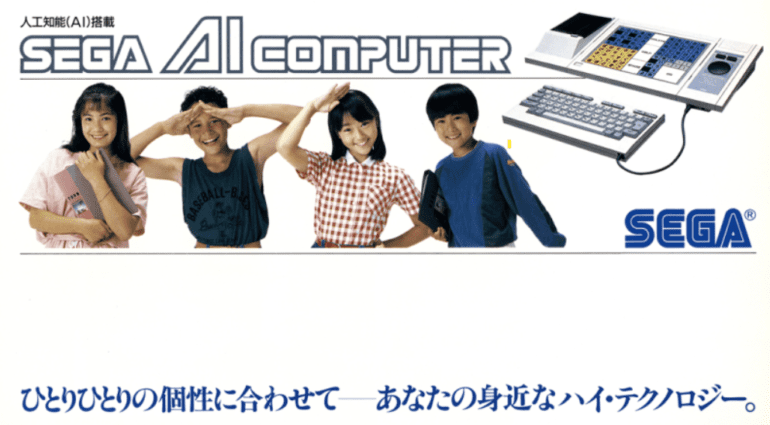TL;DR:
- Sega’s 1986 Sega AI Computer, a home computer with natural language processing capabilities, has resurfaced in Japan.
- The system is built around the NEC v20 8088-compatible MPU, featuring 128 kB of RAM and 512 kB of ROM.
- Prolog-based software empowers the ‘AI’ functionality, enabling applications like a grammatically correct diary generator.
- User-friendly interfaces include touch panel overlays and a full-sized keyboard.
- Extensive data dumps of tapes, cartridges, and ROMs have been conducted.
- Manuals and documentation have been digitized for enthusiasts to explore using MAME.
Main AI News:
In a recent discovery within the tech realm, the Sega AI Computer, a relatively obscure computing system, has resurfaced on the market in Japan, complete with an array of accompanying software. While the mere existence of such a relic might not initially pique one’s interest, what truly captivates is Sega’s pioneering attempt back in 1986 to ride the wave of Artificial Intelligence (AI) fervor. They endeavored to create a home computer capable of processing natural language, a visionary endeavor for its time. Although primarily aimed at a younger demographic, with plans for a subsequent U.S. launch, the project eventually met a quiet demise by the close of the 1980s.
The core of this computer system is built around the NEC v20 8088-compatible Microprocessor Unit (MPU), boasting 128 kB of RAM and a total of 512 kB of ROM, dispersed across multiple chips. The ROM not only houses the character set but also includes a speech table, facilitating text-to-speech functionality, and an operating system ROM grounded in Prolog. It is this Prolog-based environment that endows the system with its ‘AI’ capabilities. For instance, the ‘diary’ application engages the user in a brief questionnaire about their day, subsequently generating a grammatically precise diary entry based on the responses provided.
The system incorporates touch panel overlays for interaction, available through cartridges or tape-based applications, designed with the ease of children in mind. Alternatively, a full-sized keyboard can be employed. A comprehensive data dump of 14 tapes and 26 cartridges (‘my cards’) has been conducted, alongside the extraction of contents from every ROM embedded within the system. Additionally, the manual, as well as any supplementary documentation and promotional material that accompanied the Sega AI Computer, has been meticulously digitized, offering enthusiasts the opportunity to explore the legacy of this unique computing system while booting up their very own Sega AI Computer using MAME. It’s important to note that the MAME system remains a work in progress, and some bugs are to be anticipated. Nevertheless, this discovery provides a rare glimpse into the world of aspirational systems that never quite transcended the confines of the 1980s.
Conclusion:
The rediscovery of Sega’s AI Computer underscores the company’s early foray into AI technology. While it may have remained a relic of the past, this historical artifact sheds light on Sega’s innovative spirit. For today’s market, it serves as a reminder of the constant evolution in AI and computing, urging businesses to stay vigilant and adaptive to the ever-changing technological landscape.

